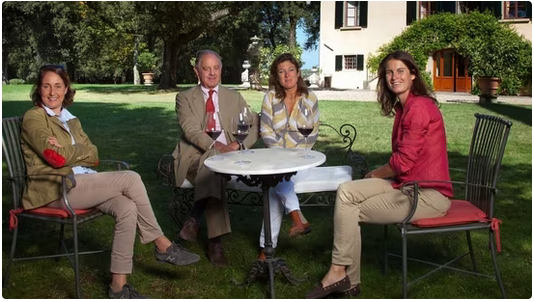
The Antinori family Senior Management

The Antinori family Senior Management
Palmer is in fact, a Third Growth classification- there are five growths of ‘1855 classification’ which is revered in Bordeaux and other places where quality French wines are the preferred choice. Chateau Margaux is of course, the First Growth.
One cannot belittle second growths like, the two Rauzans (Ségla and Gassies), Durfort Vivens, Las Combes and Brane-Cantenac which are higher in hierarchy; yet Palmer continues to be extremely popular on the consumer front.
Imported by Brindco in India, a vertical tasting was organised last Thursday at Hotel Shangri-la, where their second label Altar Ego (2004, 2003) and the real McCoy 2002, 2000, 1998 and 1995 were tasted in that order. Bernard de LAAGE de MEUX, Derecteur Développment at Palmer was in India to conduct such tastings.
Bernard chatted with me about the Classification system when I asked him if he thought the 1855 Classification was of relevance today, or if he believed their wines were better than some of the second growths. Fiercely defending the classification system, he said, ‘I am sure when they made the classification system, Palmer deserved this spot. It is only now that their quality was consistently better than ever before. I believe the system is generally still relevant to us even today.’
Like most classified growth Chateaux, they have the ‘Second’ label (not to be confused with seconds-which denotes a reject or surplus). Their Alter Ego is usually an almost equal blend of Merlot and Cab as compared to the Chateau wine which also uses a sprinkling of Cabernet Franc and Petit Verdot.
Like all top chateaux of Bordeaux, Bernard is a believer in terroir and the vagaries of nature and how they affect a particular vintage. So, what does he think of Hugh Johnson’s recent pronouncement that vintages do not matter any more (it was also reported by delWine)? He does not agree, expectedly. ‘Of course, the quality of wines has increased tremendously over the last couple of decades’ but, ‘the style of the wine is definitely dependent on the weather,’ he emphasizes.
 For instance, Vintage 2004 that we tasted of Alter Ego was a top flight classic vintage whereas the 2003 was the year of the heat wave when the ‘vines did not get affected but the fruit was over-ripe and we had lower yield but due to low rains too, the wine started out fresh and lively on the palate.’
For instance, Vintage 2004 that we tasted of Alter Ego was a top flight classic vintage whereas the 2003 was the year of the heat wave when the ‘vines did not get affected but the fruit was over-ripe and we had lower yield but due to low rains too, the wine started out fresh and lively on the palate.’
Vintage 2002 showed the perfect expression of Palmer’s terroir, he said. Well-balanced and straightforward on the palate with a smooth mouthfeel thanks to excellent tannins, he added. Vintage 2000 was a powerful wine with outstanding ageing potential, whereas 1998 was a true classic. The 1995 vintage was a true combination of terroir and technology and gave a modern, concentrated wine with good ageing potential. Perfect weather lasted throughout the year and through the harvest.
All the wines tasted were of high quality though I felt 1998 was still a bit tight. The 1995 which is just about ready to unfold its mystery will delight for the next dozen years or so. Delectable wines, in general. With the duties involved, Alter Ego would make a more affordable choice for most. 2003 and surely 2005 would be the vintages to go for, though 2006 is also considered a very good year for Bordeaux, and Chateau Palmer.
Subhash Arora
